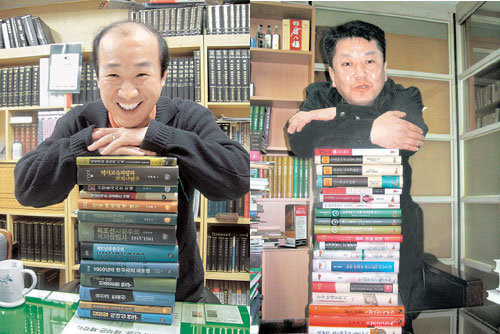Somyeong and Seonin

Language and History of Recent China; Crossing Creation and Ruins; Language Crossing Practice; Anti-Japanese Sentiment and East Asia; Modern Nations and Symbols; Lee Sang Literature Collection-
As you can tell from the titles, these are books not so reader-friendly to the general public. Since last November in particular, approximately 40 of these academic books were published. We wonder how these books could have been printed in these times of economic recession.
A Somyeong official said, In fact, only last year we were thinking of closing the publishing company due to difficulties in management. However, the academic circle encouraged us not to close and 12 of our books were selected as outstanding academic books by the Academy. So we were able to publish all the other books which we had postponed publishing.
There is another publisher who published 40 or so academic books during similar period: Seonin Publishing Company located in Mapo-dong, Mapo-gu in Seoul.
The Formation of Anti-Communist Dictatorships in Vietnam and South Korea; Points at Issue and Challenges of the Park Jung-hee Period; Russo-Japanese War and Changes in North East Asia-
Seonin started as a special rare modern history materials publisher in 1993, and from 1999, published academic separate volumes. It published less than 30 books on average every year, but last year it printed 50 or so academic books.
People in academic circles now read materials broadly rather than deeply, and the trend is that there are less people who read materials meticulously. So we started to publish separate volumes but we barely could make ends meet. The reason why we have recently increased the number of books published is because we have made our name as a recent and modern history book publisher, and so more scholars with better scripts come.
According to Yoon Gwan-baek (46) of Seonin Publishing, Seonin prints approximately 700 copies for a first printing. Two years ago, the publisher was able to print 1,000 copies, but they had to reduce the number because the copies were not generating profit. They do not welcome a second printing because academic books generally do not sell over 1,200 copies.
The reason why these two publishers continue to print books that do not generate profit is because they feel a sense of duty that if they stop, no one else will print academic books, and because they have pride in serving the staple industry of the mind. The chiefs of both companies even share the same vision in the kinds of books they wanted to publish.
It is clear that academic book publishing has no place to grow in the market. The support system for outstanding academic books by the Academy (approximately 380 books every year) and the Ministry of Culture and Tourism (approximately 250 books every year) must expand. Also, rather than providing support to publishers, there should be competition to select better publishers and providing support for publications.
Chae-Hyun Kwon confetti@donga.com







